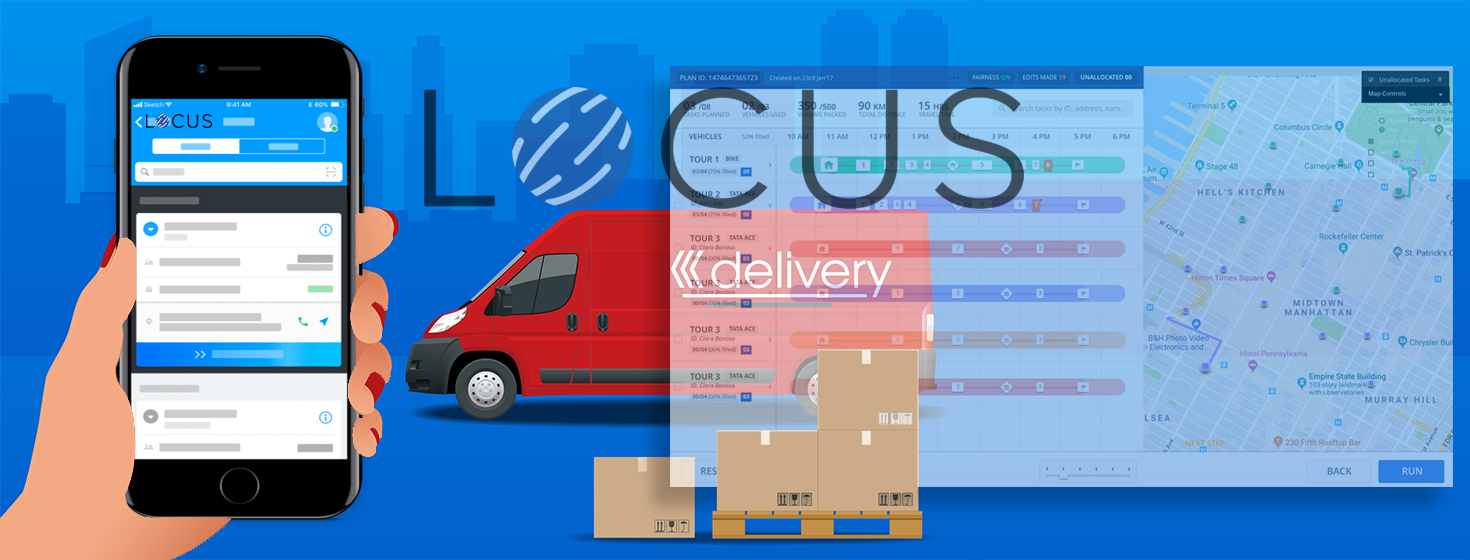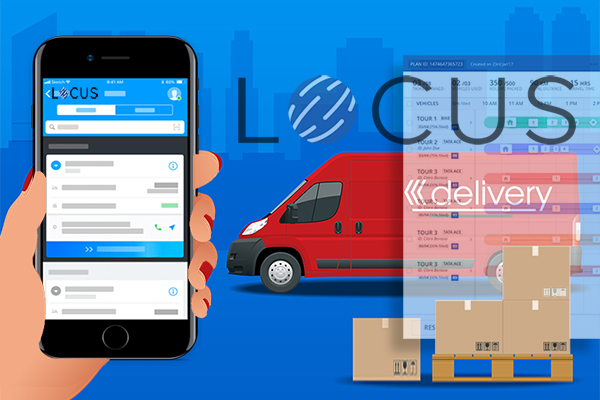How an “On The Road” App Can Improve the Life of Last-Mile Delivery Executives

Customer experience has taken center stage for the companies and the other component of last-mile deliveries, unfortunately, the delivery executives have been more or less ignored by the industry, until now.
Last-Mile Delivery Scenario
Liam works for a major e-commerce firm in Chicago and delivers about 30-35 orders per day.
The number goes up to 70 during peak seasons and festivals.
However, in most cases for delivering 35 packages, Liam has to make over 50 trips to the given locations.
Experts are of the opinion that for every 100 deliveries, a delivery executive needs to make around 140-150 visits.
The ratio increases to 230-270 in case of handling returned or rejected goods.
Fuzzy addresses, unresponsive customers, heavy traffic, dynamic delivery instructions, and other real-life constraints only add to the woes of the delivery executive.
The effect of rude customer feedbacks on mental health and damaging ‘loads’ on their backs are better left unsaid.
Last-mile deliveries are the sole touchpoints between customers and home delivery based companies and therefore act as a key differentiating factor between various players.
However, even though over the years, customer experience has taken center stage for the companies, the other component of last-mile deliveries – the delivery executives have been more or less ignored by the industry.
The Locus On The Road App
The Locus On The Road app (LOTR), an extension of our Route Optimization solution Dispatcher, is an optimization partner which improves the delivery experience and helps in tracking and managing order fulfillment in cost and time-efficient manner.
Let’s have a look at some of the major issues faced by delivery executives, and how LOTR is helping in tackling them:
1. Identification and Reaching the Delivery Address
Pinpointing the end customer’s location, especially in non-metro cities, is a big concern.
Not only Locus’ Geocoder takes the fuzziest of the addresses and converts them into precise coordinates, but the LOTR app also provides the riders with geocoder confidence, conveying the feasibility of reaching the correct address on the first go.
Locus also maps every order with address verification, ensuring that the riders know exactly where to go to deliver their orders.
Traffic congestion and narrow roads mean that the rider can often take more time to reach the customer than estimated.
Locus provides updated ETAs to the customers to ensure their availability and a better overall experience.
The Locus On The Road Application is now available on both Apple iOS and Android.
2. Unavailability of Customers
A lot of times, the customers don’t respond to the rider’s call to confirm his or her delivery address or is simply absent at the delivery location.
Locus is helping riders by providing customers with ‘geofencing notifications’, in which the customer is automatically sent an alert once the delivery executive is near the destination.
Customers can even provide specific instructions about the delivery (ex.- deliver the product in the neighbor’s house), which will be sent to the rider. Locus is also working on providing a secondary contact number of customers to the riders to achieve better connectivity.
3. Customer Satisfaction and Feedback
With companies giving increasingly more importance to customer satisfaction, feedback from the end consumer makes or breaks a rider’s remuneration. To improve the customer experience and reduce the friction in last-mile deliveries, Locus provides the feature of partial pickup and deliveries.
Earlier, if a customer had ordered a washing machine with its stand, and there was some issue with the third wheel of the stand, the customer still had to cancel the whole order, return all of his deliveries and reorder again. This not only led to customer dissatisfaction but also increased costs and hassle for the service providers.
With the LOTR app, the rider can now provide reasons for why a delivery could only be partially completed. Companies also get information about what went wrong, which allows them or their service providers to improve the processes and reduce partial delivery rates in the future.
LOTR app also allows the operations manager to manually or auto-assign a task on the go after the system does ‘best-fit analysis’ of the rider. This ensures that the additional order can reach the customer in minimum time without any hassle for the manager.
4. Proof of Delivery
For primary and secondary mile distribution, LOTR app provides the riders with a QR code that has the rider’s login information stored within. The QR code works in a lock and key model, with the QR code working as an encrypted lock and store manager’s device functioning as the key.
Here is how the process works:
- Warehouse manager prints the QR code and hands it over to the delivery executive.
- The delivery executive carries the paper along and drives till the store.
- Store manager launches the app on his mobile, logs in by scanning the delivery executive’s QR code.
- Store manager uploads POD.
Electronic proof of delivery (ePOD) also acts as a single source of truth when compared to the traditional pen and paper method which were prone to be lost, destroyed, or tampered with.
5. Lack of Internet Connectivity
Delivery executives often go to areas with sparse internet connectivity and thus require an application that allows them to work offline efficiently.
LOTR app ensures that the rider can perform most of the tasks and store data offline in his device, which then seamlessly connects back to the server when the internet is restored. Most of the times, the rider doesn’t even know about a connection issue unless syncing of data with the systems is necessary to proceed, in which case he is prompted to keep the application running and move to an area with better internet connectivity.
6. Unfriendly Apps
Apps that feel non-intuitive to riders are a big issue in the industry. Unfamiliarity and distrust on a new technology mean that rider compliance becomes the biggest challenge for companies. To cope up with this, LOTR app emphasizes on the current task by showing it in a larger format, thus reinforcing rider compliance.
The app also gives a visualized schedule of orders letting the rider know of the orders he has completed and those that are yet to be done.
The LOTR app also provides navigation and masked calling functionalities along with a built-in search on order details. Accommodating 10+ vernacular languages and allowing the rider to accept orders in bulk are just a few of the features benefiting the rider.
7. Rider Profile Management
Remembering passwords is an issue that creates not only an additional burden for the rider but also a potential security hazard. LOTR app allows the riders to set their password and makes it compulsory for them to change their passwords after a fixed amount of time.
Apart from making the rider’s life more comfortable, the LOTR app helps organizations in having micro-level visibility. What items are packed in how many boxes in which crates?
LOTR answers it all. LOTR app is built with customized designs best suited for different use cases keeping in mind the nature of order fulfillment.
LOTR app is saving logistics costs and increasing efficiency in operations, but most importantly it is making the lives of Liam better. The LOTR app is an extension of the Locus Route Optimization solution, Dispatcher.
Note: The Locus On The Road Application is now available on both Apple iOS and Android.
Related Article: How to Tackle Last-Mile Delivery Challenges Using Technology
Download Related White Paper
Why Businesses Need Route Optimization
This white paper provides an in-depth look at how route optimization software can provide the most direct and most efficient route to all your stops and destinations, and how it allows you to save money, time, and energy every time you travel from one location to another. Download Now!
More Resources from Locus
Article Topics
Locus News & Resources
How Can White Glove Service Increase Customer Loyalty? Building Your Business Around a Hyperlocal On-Demand Delivery Model AI-Backed Route Planning Solutions for Ecommerce Players U.S. and Canada Border will Temporarily Close amid Coronavirus Outbreak Multi-Echelon Supply Chain Inventory Optimization Slot Management: Customer-Preferred Delivery Time Windows Last Mile Delivery Route Optimization and the Changing Logistics of Grocery Stores More LocusLatest in Supply Chain
Ask an Expert: How Shippers Can Prep for Hurricane Season Apple Accused of Multiple Human Rights Violations South Korea Finally Overtakes China in Goods Exported to U.S. UPS Struggles in First Quarter With Steep Earnings Decline How Supply Chains Are Solving Severe Workplace Shortages SAP Unveils New AI-Driven Supply Chain Innovations How Much Extra Will Consumers Pay for Sustainable Packaging? More Supply Chain













